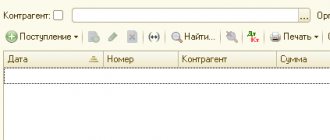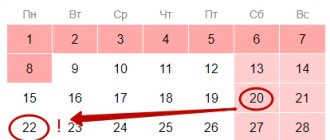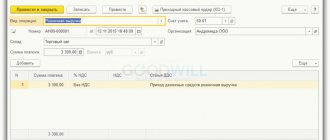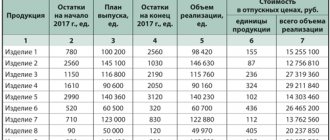The amount of income for nine months of the year preceding the transition to the simplified tax system should not exceed the limit established by the Tax Code. Income is determined in accordance with Article 248 of the Tax Code. They consist of income from sales (less VAT) and non-operating income. If for certain types of activity (for example, retail trade or transport tax), then you must calculate the income limit for “simplified taxation” for activities taxed under the general taxation regime, i.e., income that is received from activities on UTII should be taken as calculation is not necessary (clause 4 of article 346.12 of the Tax Code of the Russian Federation).
For organizations operating under the general regime and deciding to switch to the simplified tax system starting next year, it is established that the amount of income received based on the results of nine months of the year preceding the transition to the simplified tax system should be no more than 45,000,000 rubles. Since 2013, the specified amount is subject to indexation no later than December 31 of the current year by the deflator coefficient established for the next year (paragraph 2, paragraph 2, article 346.12 of the Tax Code of the Russian Federation). At the same time, the amount of income of the current year is indexed by the deflator coefficient of the same year for taxpayers who will only submit a notification about the transition to the simplified tax system next year.
Thus, the deflator coefficient established for 2013 was equal to 1. Therefore, the income limit for switching to the simplified tax system in 2014 was 45,000,000 rubles (45 million rubles × 1). The deflator coefficient established for 2014 is 1.067. Therefore, to switch to the simplified tax system from January 1, 2015, the income limit for the nine months of 2014 should not exceed 48,015,000 rubles (45 million rubles × 1.067).
The value of the deflator coefficient established for 2015 is 1.147. It is used to adjust income received in 2015 only when switching to the “simplified system” from January 1, 2021. Therefore, the income limit for the nine months of 2015, which gives the right to switch to the simplified tax system in 2021, was 51,615,000 rubles (45 million rubles × 1.147).
For 2021, the deflator coefficient was set at 1.329 (order of the Ministry of Economic Development of Russia dated October 20, 2015 No. 772). It will be used to adjust income received in 2016 only when switching to the “simplified system” from January 1, 2021. Therefore, the income limit for the nine months of 2021, which gives the right to switch to the simplified tax system in 2021, will be 59,805,000 rubles (45 million rubles × 1.329).
note
The income limit for the purpose of switching to the simplified tax system is established exclusively for organizations. This rule does not apply to individual entrepreneurs (letter of the Ministry of Finance of the Russian Federation dated March 1, 2013 No. 03-11-09/6114).
From January 1, 2021, amendments to the Tax Code introduced by Federal Law No. 243-FZ of July 3, 2021 will come into force. According to these changes, the income limit for switching to the simplified tax system is doubled. Consequently, it will amount to 90,000,000 rubles (clause 4 of article 2 of Law No. 243-FZ). However, this threshold value applies to the transition to the simplified tax system from 2021.
If an organization is going to conduct “simplified” activities from 2017, then its income for the nine months of 2021 should not exceed 59,805,000 rubles. This limit is calculated by multiplying the income limit in force in 2021 at the time of filing a notification about the transition to the simplified tax system (45 million rubles) by the deflator coefficient established for 2021 (1.329).
In addition, from January 1, 2021 to January 1, 2021, income limits will not be indexed by the deflator coefficient (clause 4 of article 5 of Law No. 243-FZ).
Conditions for applying the special simplified tax regime
The simplified system is considered a preferential regime. The conditions for its use are given in Art. 346.12, 346.13 Tax Code of the Russian Federation. But not all companies and individual entrepreneurs can take advantage of the simplified taxation option. The Tax Code of the Russian Federation establishes a ban on the use of a special regime for a number of taxpayers, for example, for organizations with branches, agricultural producers, notaries, lawyers, etc. In addition, restrictions have been introduced on other criteria:
- income for the tax period;
- number of employees;
- cost of fixed assets.
A taxpayer who has violated the restrictions will have to switch to the general taxation system - moreover, from the 1st day of the quarter in which the violation occurred.
We will look further into how the income limit under the simplified tax system was applied by year.
Taxation restrictions of the simplified tax system
Before moving directly to the taxation system itself, it is worth considering cases in which the use of the simplified tax system is prohibited:
Limitations of the simplified tax system by type of activity
- Banking services (operation of banks);
- Insurance services (work of insurance organizations);
- Operation of private pension funds;
- Lawyer services;
- Notary services;
- Operation of investment funds;
- Business related to trading in shares and other securities;
- Mining;
- Gambling business.
Limitation of the simplified tax system for physical indicators
There are also statutory restrictions on the simplified tax system for physical indicators:
- Lack of branches. If you have branches in other cities, then you are prohibited from applying the simplified tax system;
- Unified Agricultural Tax payers. If you are a payer of the single agricultural tax, then you cannot apply the simplified tax system;
- The cost of fixed assets does not exceed 100,000,000 rubles. Beginners and small businesses may not worry too much about this point, since the units have a cost of fixed assets of 100 million rubles;
- The income limit for the simplified tax system is RUB 68,820,000. If, while being subject to the simplified tax system in 2015, the specified income limit is exceeded, the organization automatically falls out of the simplified tax system;
- The income limit for switching to the simplified tax system is limited to RUB 51,615,000. This applies to organizations; there is no limit set for individual entrepreneurs;
- SSC (average headcount) is 100 people, when you have more than 100 people on your staff, then you also do not have the right to use the simplified tax system.
This is what concerns the restrictions on the application of the simplified tax system. For obvious reasons, 99% of people who read this article do not fall under the restrictions, so we continue to analyze further.
Income limit
As it was.
Until the end of 2021, the income limit for the simplified tax system is 150 million rubles. If during the year in any quarter the income exceeds 150 million, the organization or entrepreneur from the beginning of the same quarter loses the right to the simplified tax system and switches to the general regime.
For organizations that are just planning to switch to the simplified tax system, income for 9 months of the year preceding the transition should not exceed 112.5 million rubles. Otherwise, you won't be able to switch to simplified.
What is changing.
Starting from 2021, it will be possible to exceed the limit without falling off the simplified rules. If income exceeds 150 million but does not exceed 200 million, the simplifier remains in the special regime, but the tax rate for him increases:
- for the simplified tax system “Income” the rate rises from 6 to 8%;
- for the simplified tax system “Income minus expenses” - from 15 to 20%.
The increased rate is valid from the beginning of the quarter in which revenues exceeded 150 million until the end of the year.
But if income exceeds 200 million rubles, there will be no transition period and no increased rate. A simplifier immediately loses the right to a special regime and from the beginning of the quarter switches to OSNO.
The laws say nothing about how those who have a reduced simplified tax rate in the regions will pay. This means that there are no special rules, and if the limits are exceeded, the preferential reduced rate soars to the same 8 or 20%.
Concepts of tax and reporting period according to the simplified tax system. An example of calculating an advance payment.
The tax period for individual entrepreneurs using the simplified tax system is a calendar year, and the reporting period is a quarter. The declaration is submitted once a year until April 30 of the following reporting year. And although the reporting period for individual entrepreneurs is three months (quarter), there is no need to file a declaration for this period, however, entrepreneurs are required to independently calculate and pay advance payments for the single tax on the simplified tax system on a quarterly basis. In this case, the advance amount is determined as follows: the tax base in each subsequent quarter is taken on an accrual basis, multiplied by the appropriate tax rate, and the previously paid tax is subtracted from the resulting amount. For the 1st-3rd quarters of the current year, advances are paid until the 25th of April, July and October, respectively. But the final tax amount at the end of the tax period is due until March 30 of the next year.
An important point when calculating advances: • Individual entrepreneurs on a single tax of 6% (the “income” method) reduce the amount of the tax base by the amount of insurance premiums; • Individual entrepreneurs with a single tax of 15% or less (the “income minus expenses” method) include insurance premiums as expenses.
Let's consider an example: an entrepreneur is a single tax payer under the simplified tax system at a rate of 6%. In the first quarter his income was 50 thousand rubles, in the second - 80 thousand rubles, in the third - 100 thousand rubles and in the fourth - 60 thousand rubles. The entrepreneur's annual income was: 50 + 80 + 100 + 60 = 290 thousand rubles. The total amount of monthly insurance premiums for yourself is: 304.23 (FFOMS) + 1550.90 (PFR) = 1855.13 rubles. Since payment of advances under the simplified tax system is carried out quarterly, it is advisable to determine the amount of insurance premiums for this period: 1855.13 rubles * 3 = 5565.39 rubles. By April 25, the individual entrepreneur must pay to the budget: (50,000 rubles - 5565.39) * 6% = 2666.08 rubles. By July 25, the individual entrepreneur must pay to the budget: (50,000 rubles + 80,000 rubles - 5565.39 * 2) * 6% - 2666.08 rubles = 4466.07 rubles. Until October 25, the individual entrepreneur must pay to the budget: (50,000 rubles + 80,000 rubles + 100,000 rubles - 5565.39 * 3) * 6% - (2666.08 rubles + 4466.07 rubles) = 5666.08 rubles. The final tax amount for the year must be paid before March 30 of the next year and will be: (290,000 rubles - 5565.39 * 4) * 6% - (2666.08 rubles + 4466.07 rubles + 5666.08 rubles) = 3266, 08 rubles. Thus, the total amount of the single tax on the simplified tax system for the year, which will be included in the declaration, will be: 2666.08 rubles + 4466.07 rubles + 5666.08 rubles + 3266.08 rubles = 16064.31 rubles. Please note that the established payment deadlines are required to be met in order to avoid fines and penalties. For each day of non-payment of tax, a penalty is charged, amounting to 1/3 of the Central Bank refinancing rate. In addition, in case of late payment of tax based on the results of the year, a 20% fine of the amount of underpayment will be charged.
Insurance premiums 2015
From January 1, 2015, numerous amendments to the legislation on insurance premiums come into force. Innovations were introduced by Federal Law No. 188-FZ of June 28, 2014 (hereinafter referred to as Law No. 188-FZ). And they concern both the contributions themselves, reporting on them, and relationships with funds.
Here are some of the significant changes: From 2015, more “simplifiers” will have to submit reports to insurance premiums via the Internet. Now this is done by employers using the simplified tax system, whose average number of employees over the past year exceeded 50 people. Starting from the new year, the limit will be 25 people.
In addition, contributions will need to be paid in rubles and kopecks. There is no need to round up the amount to whole rubles, as now. And payments in favor of any foreigners will have to be subject to pension contributions, regardless of the term of the contract concluded. We have presented a summary of all the innovations that are relevant for “simplified” people in the table below. Let's talk about the most important of them in detail.
Currently, employers are required to report to the Pension Fund and the Social Insurance Fund on insurance premiums via the Internet only if the average number of their employees over the past year exceeds 50 people. This is stated in paragraph 10 of Article 15 of the Federal Law of July 24, 2009 No. 212-FZ (hereinafter referred to as Law No. 212-FZ). For violation of this requirement, inspectors may fine you 200 rubles. for each reporting form (clause 2 of article 46 of Law No. 212-FZ). If last year there were 50 or fewer employees, then you can submit reports to the funds on paper.
From January 1, 2015, all employers whose average number of employees for the last year was more than 25 people will be required to report electronically (subclause “c” of paragraph 3 of Article 5 of Law No. 188-FZ). Thus, the number of “simplified” employers who will submit calculations of contributions via the Internet will increase. Let us remind you that in order to submit reports electronically, you must have an electronic signature. Accordingly, those who do not have one need to obtain a signature. You can then report via the Internet.
Please note there are two options for this. The first is to contact a special communications operator and conclude an agreement with him. He will install a program on your computer with which you will submit reports. The second is to send reports directly from the fund’s website using a special service.
According to the current rules, there is no need to pay contributions on compensation payments upon dismissal. Moreover, payments are exempt from both contributions to compulsory pension, medical and social insurance, and from contributions to injuries (para.
"d" subp. 2 p. 1 art. 9 of Law No. 212-FZ and para. 6 subp. 2 p. 1 art. 20.2 of Law No. 125-FZ). The exception is compensation for unused vacation. You transfer contributions from them in the general manner.
From 2015, the payments from which you will have to pay contributions will increase. In particular, you will pay contributions on severance pay upon dismissal and the average monthly earnings saved for the period of employment. Provided that the amount of these payments exceeds three times the average monthly salary (six times for workers from the Far North and equivalent regions). In this case - please note - not the entire amount will be taxed, but only the part that exceeds the established amount of average monthly earnings. Also, contributions will be required for compensation of the manager, his deputy and the chief accountant, exceeding three times their average monthly earnings. If you pay the employee a smaller amount upon dismissal next year, then insurance premiums do not need to be calculated (subparagraph “a”, paragraph 3, article 2 and subparagraph “a”, paragraph 1, article 5 of Law No. 188-FZ).
Currently, the procedure for paying pension contributions from payments to foreign workers depends on their status. Thus, you pay remuneration contributions to permanently and temporarily residing foreigners in the usual manner. That is, the same as the income of Russian citizens - from the date of their hiring. But you accrue contributions to the Pension Fund from the income of temporary foreign workers only if they have concluded employment contracts for an indefinite period or a contract (contracts) with a total duration of at least six months during the year. And also when an employment contract is drawn up with a foreigner for a period of less than six months during the year, with subsequent extension (clause 1, article 7 of the Federal Law of December 15, 2001 No. 167-FZ and sub-clause 15, clause 1, article 9 of Law No. 212-FZ ).
Since 2015, you will have to pay contributions to the Pension Fund for payments in favor of any foreigners, regardless of the type of employment contract and its duration (Clause 4, Article 3 of Law No. 188-FZ). In this regard, the payment of contributions for all foreigners and citizens of the Russian Federation will be the same.
As for contributions to the Social Insurance Fund and the Federal Compulsory Medical Insurance Fund, in 2014 and 2015, accrue them in the general manner only for payments to permanently and temporarily residing foreigners. Do not deduct contributions from the income of temporary residents (subclause 15, clause 1, article 9 of Law No. 212-FZ and clause 1, article 2 of Federal Law No. 255-FZ of December 29, 2006). The exception is contributions for injuries. They are accrued from payments to all foreign employees, regardless of their status (clause 2 of article 5 and clause 1 of article 20.1 of Law No. 125FZ).
At the moment, you pay insurance premiums for your employees in rubles, excluding amounts less than 50 kopecks. and rounding up the sum to 50 kopecks. and more (clause 7 of article 15 of Law No. 212-FZ). In calculations using the RSV-1 PFR and 4-FSS forms, you reflect the accrued contributions in kopecks.
Starting from the new year, you will be able to pay contributions in the same way as accrue them - in rubles and kopecks (subparagraph “a”, paragraph 3, article 5 of Law No. 188-FZ). Thus, you will no longer have any discrepancies between the amount of insurance premiums paid and the amount you reflected in your reporting. The change will thereby avoid penny arrears. And it will protect you from disputes with specialists of extra-budgetary funds.
We fill out section 1.1.
- 001. The value 1 is automatically entered (for “STS-income”);
- 010.Indicate the IP or LLC code according to OKTMO. This is a code indicating the location of the enterprise or the place of residence of the individual entrepreneur. Point 030 is also intended for this information, like 060 and 090. If the code does not change throughout the year, fill in only 010, and put dashes in the remaining points;
- 020 (as well as three points below, 040, 070 and 100) – the amount of advance payments, calculated according to the data from section 2.1. (we subtract the insurance premium and other payments from the income tax amount);
- 050 (similar to 080, 110) – reduction of the tax amount (if the value of the deduction amount is greater than the tax amount, the value from lines 040, 070 or 100 is transferred to lines 050, 080 or 110 without the minus sign).
What is the simplified tax system in 2021?
We often hear from people about the simplified tax system, but many, I bet, don’t really know what it means. STS stands for simplified tax system. It is also often called “simplified” among the people. How has this system earned its popularity among small companies and organizations? First of all, the simplified version provides for a small tax burden. Another plus is that tax accounting is, in principle, very simple and understandable. Individual entrepreneurs in our country especially love this taxation system.
LIFO canceled
Simplified companies can no longer write off goods using the LIFO method when calculating taxes. Legislators abolished it in order to bring tax accounting closer to accounting. After all, this method has not been used in accounting for a long time. Therefore, companies that assessed goods in this way in 2014 must choose one of the three remaining (subclause 2, clause 2, article 346.17 of the Tax Code of the Russian Federation, as amended by Federal Law No. 81-FZ of April 20, 2014):
– at the cost of the first acquisition (FIFO);
– at average cost;
– at the cost of a unit of goods.
There is no need to recalculate the balances of goods that are listed in the company’s records as of January 1. In 2015, they need to be written off according to new rules, which the company needs to approve in its accounting policies.
Compensation can now be written off
Under the simplified taxation system, labor costs can include all the same payments as when calculating income tax (subclause 6, clause 1, clause 2, article 346.16 of the Tax Code of the Russian Federation). Since January 1, 2015, the list of labor costs includes severance benefits that an employee receives upon termination of an employment contract by agreement of the parties (clause 9 of Article 255 of the Tax Code of the Russian Federation). This means that such payments can be taken into account without risk even on a simplified basis. The main thing is that the provision regarding them should be in the employment contract with the employee or in a separate agreement, including on termination of the employment contract, as well as a local act, for example, a regulation on remuneration.
The Russian Ministry of Finance has previously allowed the inclusion of compensation provided for in the additional agreement to the employment contract in labor costs (letter dated July 16, 2014 No. 03-03-06/1/34828). But tax officials believed that such payments can be taken into account only if they are of a production nature and related to the regime and working conditions of the employee (letter of the Federal Tax Service of Russia dated July 28, 2014 No. GD-4-3/14565).
Important numbers
RUB 68,820,000 — an income limit that allows you to work on a simplified basis until the end of 2015
RUB 51,615,000 — an income limit that allows you to switch to a simplified system from 2021
Loan interest rates are no longer regulated
Companies using the simplified tax system since 2015 with the object “income minus expenses” have the right to fully include interest on loans and borrowings in the tax calculation. They need to be standardized only if the parties to the agreement are interdependent and the transactions (loan agreements) concluded between them are recognized as controlled (clause 2 of Article 269 of the Tax Code of the Russian Federation).
In the simplified version, interest must be included in expenses according to the same rules as when calculating income tax (clause 2 of article 346.16, article 269 of the Tax Code of the Russian Federation, letter of the Ministry of Finance of Russia dated June 11, 2013 No. 03-11-11/21720 ). Since 2015, the rule on interest rate regulation has been abolished for companies on the common system. Accordingly, simplified companies do not need to use it. Moreover, this also applies to contracts concluded before 2015. Interest accrued on these contracts starting January 1 can be expensed in full on the date it is paid to the lender.
Property tax
Since 2015, organizations using the simplified tax system must pay property tax on real estate, the tax base for which is the cadastral value (clause 2 of article 346.11 of the Tax Code of the Russian Federation). The company becomes obligated to pay this tax if three conditions are simultaneously met. First, the company owns an administrative, business or shopping center, or premises in it or non-residential premises used for offices and trade. Secondly, in the region where this object is located, there is a law on the payment of property tax on the cadastral value of real estate. And third, the company’s real estate is included in a special list approved by regional authorities (Article 378.2 of the Tax Code of the Russian Federation).
On April 30, 2015, you must submit your property tax calculation using the simplified procedure for the first time.
VAT return for simplifiers
From January 1, 2015, simplified companies that issue VAT invoices must reflect the data of each of them in the VAT return (clause 5.1 of Article 174 of the Tax Code of the Russian Federation). For this purpose, the new declaration form contains Section 12. And it will need to be submitted starting with the reporting for the first quarter of 2015 no later than April 27. And in electronic form. For unsubmitted and paper reports, tax authorities have the right to block the account (Clause 11, Article 76 of the Tax Code of the Russian Federation).
By the way, it will now be quite easy for inspectors to find out that a company issues VAT invoices using a simplified method, but does not report and transfer it to the budget. Since all invoices (both incoming and outgoing) are now reflected in the declarations, tax authorities will see the VAT claimed for deduction from the buyer.
How to fill out a declaration: step-by-step instructions
The form for filling out the declaration according to the new form contains six pages:
- title page with information about the enterprise or entrepreneur;
- section 1.1. (only for simplified users on the “STS Income” system);
- section 1.2. (only for those who work under the “STS expenses” system);
- section 2.1. (similar only for “USN-6%”);
- section 2.2. (for "USN-15%);
- section 3 (for everyone, but only in certain situations).
The last section appeared only in this updated form, it is informational, and is filled out in very rare cases. If you received property or money in the form of targeted financial assistance or charitable activities, you must fill out Section 3. In 95% of cases, the tax return of the individual entrepreneur USN 2015 does not contain this section. If you need to know how to fill it out correctly, open Appendix No. 5 of the officially approved filling procedure. We recommend that you read this document.
Depending on which form of the simplified tax system is chosen by the entrepreneur, only certain sections of the declaration are filled out:
- for “USN-6%” (income taxes) – this is the first title page and sheets 1.1., 2.1.;
- for “USN-15%” (taxes on the difference between income and expenses) – title page and sections 1.2. and 2.2.
Other blank sections of the return do not need to be filed with the IRS. In 95% of cases, you will have three sheets, or four sheets with section 3. Since section 1 contains data based on calculations from section 2, it is better to fill out the form in reverse order, from the end.
It is convenient to use the sample filling for the correct preparation of the tax return for the simplified tax system 2015. You can download such examples from the links:
- example of a correctly completed form for “USN-6%”
- sample of a correctly completed declaration for “USN-15%”







